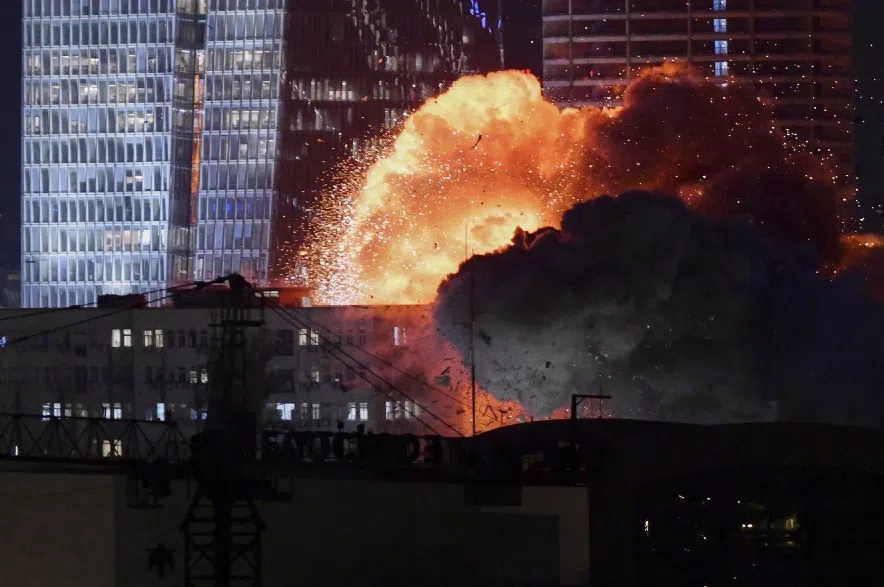Old wounds have been reopened thanks to an early morning attack in Iran.
In the early hours of June 13, the Israeli military took part in an operation targeting Iranian missile and nuclear sites.
Read more:
- Israel destroyed above-ground portion of Iran’s main nuclear facility, UN nuclear chief says
- Public service shrinks by nearly 10,000, with tax, immigration hit the hardest
The strike used more than 200 aircraft against around 100 different targets.
Sean Foley is a professor of history at Middle Tennessee State University and he joined The Evan Bray Show on Friday to discuss the attack.
Listen to Sean Foley on The Evan Bray Show:
He said that there are multiple reasons behind the seemingly sudden offensive.
“They argued that they needed to neutralize an immediate and existential threat that’s been reinforced by the International Atomic Energy Agency (IAEA), which found that Iran was failing to meet nuclear obligations. But there are other reasons as well,” Foley said.
“This is a time by which Iran, a country that had threatened Israel in the past with one of its proxies Hezbollah — which had actually fought Israel to a standstill in 2006 — and all those allies in the region, including Hamas, are either eliminated or extraordinarily reduced,” he said.
“This gave Israel an opportunity to strike at Iran in a way that it had never done before, and this involved years of planning and enormous action,” said Foley.
The current extent of the damage is unknown, but Iran has since confirmed the deaths of three of its top military leaders: one who oversaw the entire armed forces, Gen. Mohammad Bagheri; one who led the paramilitary Revolutionary Guard, Gen. Hossein Salami; and the head of the Guard’s ballistic missile program, Gen. Amir Ali Hajizadeh.
Iran confirmed all three deaths, significant blows its governing theocracy that will complicate efforts to retaliate. Khamenei said other top military officials and scientists were also killed.
‘A strong message’
Foley said that even if the strikes don’t result in the maximum amount of damage Israel may have wanted, they deliver a strong message.
“This seems to be a message to Iran, at the very minimum: ‘Change your policies, we do not want to live in a world by which you have a nuclear weapon or potentially have access to a weapon that could wipe us off the map. That world, that era, is over, and we no longer want to be living in fear,’” said Foley.
He referred to two Israeli covert attacks that took place in 2024, where Israel used thousands of booby-trapped handheld pagers and walkie-talkies to target Iran-backed Hezbollah fighters operating in both Lebanon and Syria.
“On a certain level this is like that but at a much greater scale. We’re talking reports of 200 aircraft in the air, multiple sorties so far,” he said.
“That’s a lot — that’s a third of the Israeli Air Force in a country that’s already at war with other of its neighbours and has strategic and security concerns. That’s a significant amount of firepower to put into this operation.”
Israeli leaders have described the attack as a pre-emptive strike to eliminate the threat of Iran building nuclear weapons, but Iran has maintained that its nuclear program is strictly for civilian use.
This is the most significant attack Iran has faced since its 1980s war with Iraq.

An explosion is seen during a missile attack in Tel Aviv, Israel, Friday, June 13, 2025. (AP Photo/Tomer Neuberg)
U.S. intercepting Iranian missiles
Iran’s Supreme Leader Ayatollah Ali Khamenei is vowing Israel will face “severe punishment” in response to the attack, and the U.S. military is helping intercept missiles that Iran fired in retaliation at Israel, a U.S. official says.
“Don’t think that they hit and it’s over. No. They started the work and started the war,” Ayatollah Ali Khamenei said in a recorded message. “We will not allow them to escape safely from this great crime they committed.”
The U.S. has been moving assets nearer to Israel to assist in missile intercepts and to provide better protection of U.S. bases in the region.
While the official did not say how the U.S. provided assistance, both U.S. Air Force fighter aircraft and destroyer-based missile defenses have intercepted missiles in previous attacks.
The official spoke on condition of anonymity to discuss ongoing operations.
An Associated Press reporter saw smoke rising in Tel Aviv after an apparent missile strike. Israeli paramedics reported a handful of injuries in the Tel Aviv area.
Countries in the region condemned Israel’s attack, while leaders around the globe called for immediate deescalation from both sides.
The U.N. Security Council scheduled an emergency meeting for Friday afternoon at Iran’s request. In a letter to the council, Iran’s Foreign Minister Abbas Araghchi called the killing of its officials and scientists “state terrorism” and affirmed his country’s right to self-defense.
In its first response Friday, Iran fired more than 100 drones at Israel. Israel said the drones were being intercepted outside its airspace, and it was not immediately clear whether any got through.
Israel’s military said it called up reservists and began stationing troops throughout the country as it braced for further retaliation from Iran or Iranian proxy groups.
U.S. President Donald Trump urged Iran on Friday to reach a deal with the U.S. on its nuclear program, warning on his Truth Social platform that Israel’s attacks “will only get worse.”
“Iran must make a deal, before there is nothing left, and save what was once known as the Iranian Empire,” he wrote.
U.S. Secretary of State Marco Rubio said Israel took “unilateral action against Iran” and that it believed the strikes were necessary for its self-defense.
The International Atomic Energy Agency said it was closely monitoring radiation levels.
— with files from Canadian Press and The Associated Press
Read more:











